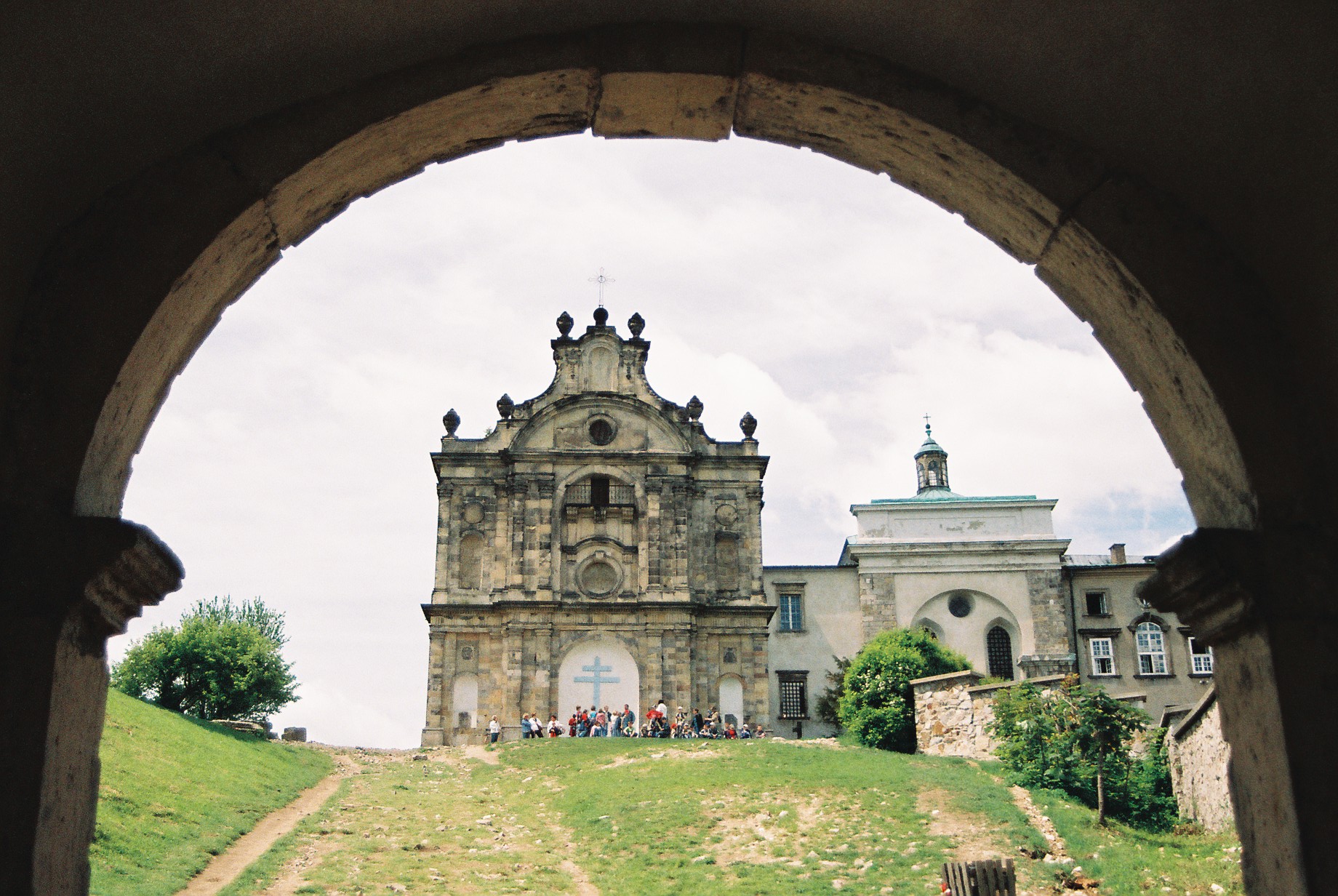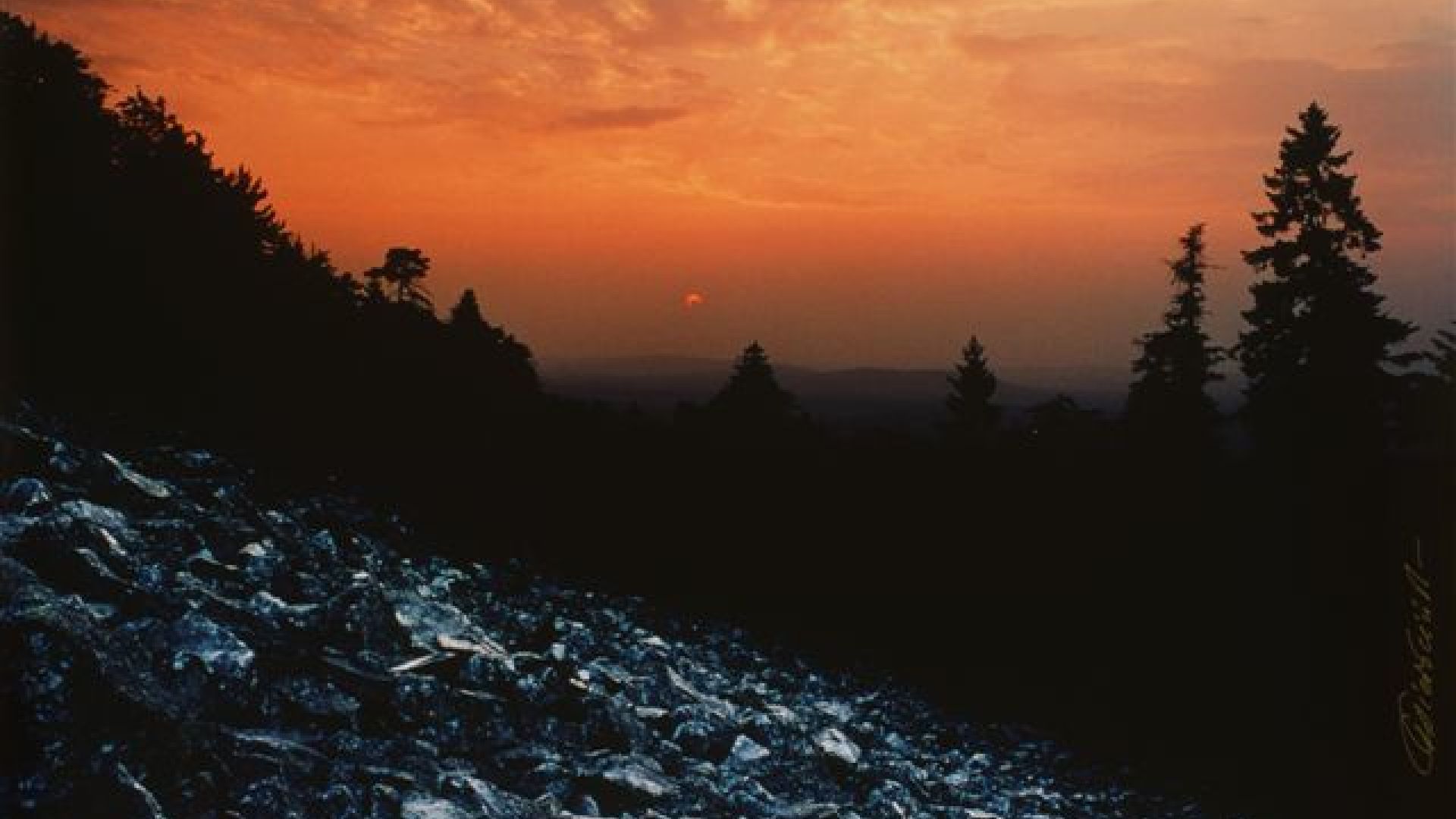One of the most popular routes leads through the Świętokrzyskie Mountains, covering Świętokrzyski National Park and Łysogóry. The trail starts at the monastery in the Holy Cross and finishes in Saint Katarzyna, the place where Stefan Żeromski left his sign.
Course: Święty Krzyż – Huta Szklana – Podlesie – Kakonin – Saint Mikołaj Pass – Łysica – Saint Katarzyna
Marking: red
Time: about 4h (Time does not include the sightseeing).
Lenght: 16km
Monastic complex on Łysa Góra - the exact date of the beginning of a Benedictine abbey, disappears n the darkness of a history. The earliest mention of the source ("Wielkopolska Chronicle") mentions that the founder of the Abbey was Boleslaw Krzywousty. Ever since the Middle Ages, the monastery was the center of the medieval cult of relics of the Holy Wood of the Cross. In 1819, there was dissolution of the monastery, and in the years 1884-1939 there were severe Tsarist prison. Currently, the monastery occupies part of the Order of the Missionary Oblates of Mary Immaculate.

The complex consists of a church and buildings, adjacent to the north of the monastery . From the east facade, along the walls of the church, go to the courtyard, where the wicket goes inside. Through the Gothic cloisters, one can come to the marble tomb in the form of a baroque altar, where in 1766 the monks moved the remains buried in the church basement. It should also pay attention to the church, where we can admire the neoclassical interior images of Francisze Smuglewicz, one of the most talented painters of Polish late 18th and early 19th centuries. Leaving the church through the neighboring door, we come to the sacristy, where you can admire the 17th-century marble lawaterz and wood paneling from the same period. Placed on the barrel vault of murals depicting scenes from St. Benedict. Marble portal leads to the chapel of Oleśnicki. Eyesight here attracts a colorful wall paintings and 18th-century paintings illusory. Relics of the Holy Cross are kept in today"s Tabernacle, located on the 16th-century marble altar. Storied tomb of the founder of the family is at the door. Attention excellent study of 17th-century knight"s weapons, uniforms and female faces, as well as the dead people. Continuing the walk through the cloisters, we pass ornaments and wrought iron bars of the 17th century, the shop and Museum of Mission which presents souvenirs from around the world gathered at the Oblate missionary expeditions. Here you can also refer to the tragic history of the abbey prisoners. After leaving the monastery, you may visit the crypt (south side), where the body of Yeremi Wiśniowiecki has been presented. Worth to see is the Museum of Nature and Forest of Świętokrzyski National Park. It is housed in a chalet in the 17th century wing (west entrance). Geological, archaeological, floral and fauna collections are presented from the site of the Holy Cross Mountains.
Huta Szklana – village at the foot of Łysa Góra The name comes from the village founded in the 16th century glass factory. After leaving the forest, one can admire views of the Beliński Chain and the Kielecko-Łagowska Valley One should notice a monument of the "Three Crosses", devoted to Poles murdered in the East, in Kharkov, Katyn and Mednoye.
Pass of St. Mikołaj - here is the chapel of Saint Mikołaj, the patron of travelers and defender against wild animals. Chapel is on the crossroad in 1867, near the route which links the villages of the north and south side of Łysogórskie Chain.

Kakonin –in the village one can see historical wooden hut from 19. century – an example of Świętokrzyska folk tradition. Nowadays, the hut is take care by the Board of Good Taste.
Łysica (612m above sea level) - the highest mountain in the Holy Cross Mountains, located in the western part of Łysogóry. The top of the hill consists of quartzite sandstone that make up the boulder fields, and the whole massif is a part of the Świętokrzyski National Park. Łysica, the summit wrapped by many legends, has long inspired artists. Alexander Janowski, a pioneer of Polish sightseeing, wrote: "cut off from the Carpathians and the Tatra Mountains, we took Łysica as a great summit, I remember ... a startling impression that made this summit of Łysica, hidden in the cloud ... and the fir- edged by spring greenery. And then I saw the Alps, Pyrenees, Balkans, Apennines, Atlas, Cordillera, Fudżiyamę, but it was not”. Bald Mountain summit was crowned with a cross.
Święta Katarzyna - one should visit the Bernardine convent and Private Gallery of Minerals and Fossils – inevitable tourist point for lovers of geology, but also people sensitive to the beauty of inanimate nature. Tourists count on professional knowledge and proffesional guide service. Through the village runs the Edmund Massalski red tail from Kuźniaki to Gołoszyce. On the trail, which leads to Łysica, the highest mountain of Holy Cross Mountains, there is a brick chapel of the 18th century, where Stefan Żeromski signed his name. Beside the chapel graves insurgent of 1863 and partisan of Second World War are located. According to many legends, the spring of Saint Franciszek has medical properties.
